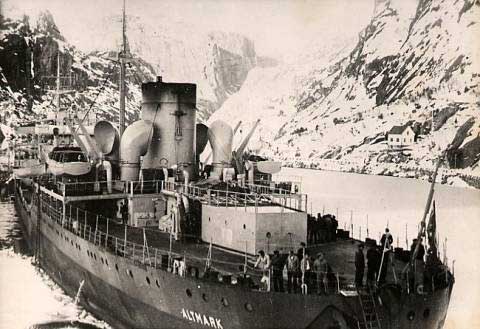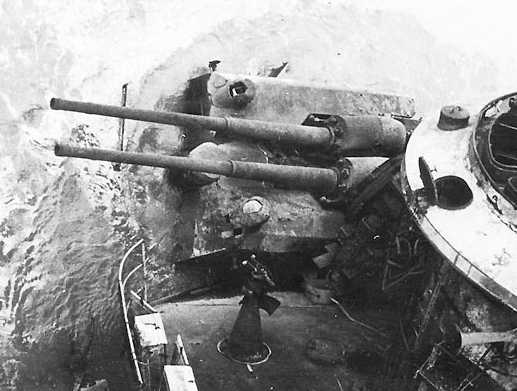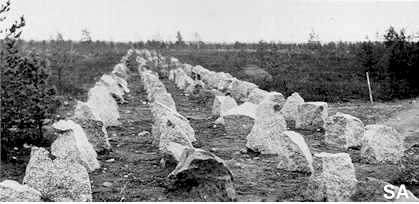Saturday 16 March 1940
 |
| HMS Norfolk. |
There are 7 RN and 8 civilian casualties in a nearby village, the Bridge of Waithe, hit apparently by accident when a bomber fleeing the vicinity releases its bombs there to aid its escape. The raid is historic because it includes the first British civilian fatality of the war. The Luftwaffe loses either one or two aircraft (sources vary). The unlucky civilian is James Isbister, aged 27.
Luftwaffe Major Fritz Doensch, who was on the mission, comments: "It was a long flight, but we're used to that. 1 radio operator had a harmonica to keep us cheerful."
During the night, British reconnaissance planes operated over Poland and over the Heligoland Bight. RAF planes also stage a raid on Borkum in the Frisian Islands.
Battle of the Atlantic: British trawler HMS Maide strikes a mine and sinks. Six, including the commanding officer, lost.
The 4,512-ton Yugoslavian freighter Slava hits a mine in the Bristol Channel and sinks. There is one fatality, 33 survive. The mine was laid by U-29 on 2 March 1940.
Convoy OA 111 departs Southend, Convoy OB 110 departs Liverpool, Convoy OB 111 also departs Liverpool.
German Military: Hitler holds a conference involving senior Wehrmacht leaders.
A new decree establishes brothels for the troops - under medical supervision. The ostensible purpose is "to protect Wehrmacht members against health dangers." Jewish prostitutes are banned, but other working girls can avoid any police hassles by helping out the boys in uniform.
Panama: The President of Panama, Augusto S. Boyd, lodges an official protest with the Court of St. James for aggressive British actions within the Latin American neutrality zone off the coast of Brazil. The incident involved the Wakama on 12 February 1940.
US Government: Undersecretary of State Sumner Welles is back in Rome, conferring again with the King, Mussolini, and Ciano after his visits to Berlin, Paris, and London. At this point, he appears to be acting as a mediator, which may make certain parties in other capitals uncomfortable. In any event, he is not accomplishing anything if that is his agenda.
British Home Front: The Admiralty offers cash prizes for information about enemy naval activities.
China: The Japanese attack the Chinese New 4th Division west of Linhe. While they are occupied there, the Chinese 35th Army of the 8th War Area moves east along the Wu-chia River toward Wuyuan. This is the opening of the Battle of Wuyuan.
In the continuing Battle of South Kwangsi, the 22nd Army captures Chiuchow and Luwu.
Future History: John F. Kennedy, the son of current US ambassador to the Court of St. James Joseph Kennedy, publishes his senior year thesis at Harvard. It covers the pre-war period of negotiation between England, France, and Germany. The thesis is later published as a book after some re-drafting, given a title taking off on Winston Churchill's 1938 classic "While England Slept." The book, "Why England Slept," is a financial success that enables future US President Kennedy to donate money to Plymouth England and also buy himself a Buick convertible. It looks at the Chamberlain policy of appeasement with sympathy. Chamberlain, of course, remains the PM, and it is only later that attitudes toward him and his policies harden.
 |
| "Modern Wonders' of 16 March 1940 explains why "We can't win wars without spiders." Modern wonders apparently include biplanes. |
March 1940
March 1, 1940: Soviet Breakthroughs Past ViipuriMarch 2, 1940: Soviets Swarm West in Finland
March 3, 1940: Soviets Across Gulf of Viipuri
March 4, 1940: USSR Apologizes to Sweden
March 5, 1940: Katyn Forest Massacre Approved
March 6, 1940: Finns Head to Moscow
March 7, 1940: The Coal Ships Affair
March 8, 1940: Peace Talks Begin in Moscow
March 9, 1940: Soviets Harden Peace Terms
March 10, 1940: Germany Draws Closer to Italy
March 11, 1940: Winter War Peace Terms Finalized
March 12, 1940: War is Over (If You Want It)
March 13, 1940: Winter War Ends
March 14, 1940: Evacuating Karelia
March 15, 1940: The Bletchley Bombe
March 16, 1940: First British Civilian Killed
March 17, 1940: Enter Dr. Todt
March 18, 1940: Mussolini To Join the War
March 19, 1940: Daladier Resigns
March 20, 1940: Soviets Occupy Hango Naval Base
March 21, 1940: Paul Reynaud Leads France
March 22, 1940: Night Fighters Arise!
March 24, 1940: French Consider Alternatives
March 25, 1940: Reynaud Proposes Action
March 26, 1940: C-46 First Flight
March 27, 1940: Himmler Authorizes Auschwitz Construction
March 28, 1940: Allies Ponder Invading Norway
March 29, 1940: Soviets Prefer Neutrality
March 30, 1940: Allied Uncertainty
March 31, 1940: The Tiger Cage
2019


















